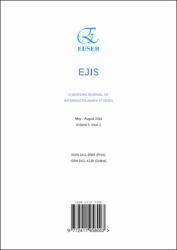| dc.description.abstract | Cinema and television play an important role in mass media. In the cinematic context, the field of cultural studies, which explores what the audience watches, tries to shed light on the psychosocial needs of the target audience and the cultural structure of society. With the use of digital technology in information production, transmission, and storage, as well as the rapid progress, integration, and convergence of information technologies, television is no longer limited to a place, and widespread access to mobile devices is possible. Consequently, both cinema and television have allowed masses of people to become increasingly aware of what is happening in the world.However, the tendency to go to the cinema and watch television emphasizes the psychosocial and sociocultural dimensions of the relationship between audiovisual media and its audience. Going to the cinema and watching television is an experience that young people engage in for various reasons such as escapism, relaxation, education, entertainment, and socialization. Furthermore, viewers employ different tools including television, mobile phones, tablets, the internet, and new media.This descriptive study aims to evaluate the tendencies of the students of the Cinema and Television (CTV) Department of the Fine Arts Faculty of AfyonKocatepe University (AKU GSF) to visit the cinema and watch television. Questionnaires were used as a data collection tool. The survey, Motivation to go to the Cinema, that was developed by Yousry (2009) and Hassan (2015) was consulted to prepare the research questions. The questionnaire was translated into Turkish by Yoğurtçu and Yoğurtçu (2017). Furthermore, the Television Monitoring Motivation Scale, developed by Özarslan and Nisan (2011), was used in this survey. Face-to-face interviews were conducted with students from the AKU GSF Department of CTV. The data were analyzed using descriptive and multivariate statistical techniques (Correspondence Analysis). The results obtained from the analysis of the collected data are presented in related tables and figures. | en_US |



















